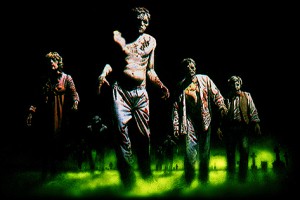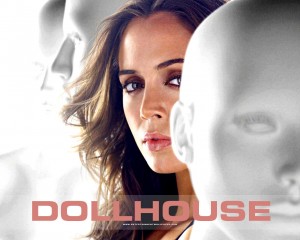 In a previous post I mentioned in that in my research on zombies as symbols in culture I came across the research of James Siburt on the topic. Siburt is a doctoral student at Alvernia University, Reading PA, in the Leadership Studies Ph.D. Program. His research is interdisciplinary, examining the intersection of popular culture media, leadership theory, religion and communications, with a primary research interest in the role semiotics plays in each of these areas. He is also adjunct faculty at Alvernia University where he teaches courses in philosophy, theology, and ethics. James is on staff at Lancaster Theological Seminary, in Lancaster PA, where he is the Director of Educational Technology as well as adjunct faculty teaching in the area of leadership and cultural studies.
In a previous post I mentioned in that in my research on zombies as symbols in culture I came across the research of James Siburt on the topic. Siburt is a doctoral student at Alvernia University, Reading PA, in the Leadership Studies Ph.D. Program. His research is interdisciplinary, examining the intersection of popular culture media, leadership theory, religion and communications, with a primary research interest in the role semiotics plays in each of these areas. He is also adjunct faculty at Alvernia University where he teaches courses in philosophy, theology, and ethics. James is on staff at Lancaster Theological Seminary, in Lancaster PA, where he is the Director of Educational Technology as well as adjunct faculty teaching in the area of leadership and cultural studies.
Siburt responded to a few questions about his ongoing research on zombies and semiotics in the following interview.
TheoFantastique: James, thanks again for responding to some questions about your research. When I came across your paper abstract through an Internet search I was pleased to find another theologian doing academic research on zombies. How does a theologian come to develop this personal interest in this research topic, and how did you come to focus on a semiotic study of the zombie?
James Siburt: Thanks for inviting me and finding my work interesting. My primary area of research interest is the semiotics of popular culture media, specifically in the area of sci-fi and fantasy films and television, although I also enjoy exploring the same phenomenon in comics and gaming. A professor once said, “You’re going to spend many years exploring your field, so you should do research on topics that you enjoy.” Many of the postmodern philosophers that I study and follow, such as Pierre Bourdieu, Roland Barthes, and Clifford Geertz were firm proponents of our cultural products being viable sources of investigation that provide a window of understanding into our culture. In my opinion, when it comes to understanding the human condition, there is no better place to start than the products of popular culture.
TheoFantastique: To begin a consideration of your research, can you describe semiotics for the reader, and define “symbol” as it relates to your thesis on the zombie in culture?
James Siburt: That is a big question to answer in a brief statement, so I’ll give it my best shot. The field of semiotics/semiology, which is Greek for sign, was first referred to as a science by John Locke in his text, “An Essay Concerning Human Understanding.” It was further refined, almost simultaneously on two separate continents, by both Charles Sanders Peirce and Ferdinand de Saussure to designate signification, and described by the latter as, “a science which does not yet exist.” Both Peirce and Saussure conventionalized the terms, semiotics and semiology, which are used interchangeably in most 20th and 21st century texts as a matter of preference. Semiotics is a broad and ever changing field that examines the linguistic structure of cultures: visual, verbal, and textual. I am principally concerned with the image conveyed by language and what is being impressed upon the mind. According to Barthes, the major differences between sign and symbol are that, although both provide a mental image and an existential aspect, only the symbol provides analogy and adequacy. A symbol provides the analogy that connects one to the existential aspect. It is due to this rich connection that Bourdieu can use the term symbolic power to refer to those symbols which have the ability to coerce, manipulate, control, or oppress through their usage. In this particular project I wanted to examine how the zombie as symbol was being used and if Bourdieu’s theory rang true.
 TheoFantastique: How does your research on the zombie differ from Kyle Bishop’s work, discussed here previously?
TheoFantastique: How does your research on the zombie differ from Kyle Bishop’s work, discussed here previously?
James Siburt: When I initially recognized the zombie phenomenon, I began doing preliminary research by looking at peer reviewed articles. Kyle’s work was the most prolific and validated all of my initial assumptions about what I was observing. As I am a semiotician and Kyle more of a sociologist, his work married well with mine. I felt that where Kyle’s work explored the social anxiety being expressed through the blood, gore, and death in zombie films, that it neglected to examine the cultural understanding of the symbol of the zombie and how the symbol functions in such a way as to impress upon us a particular meaning or significance. Like any good researcher, I looked for the gap and hoped to fill in more of the missing pieces. What I discovered was that the zombie phenomenon is a still a very rich area of research in which I barely scratched the surface.
TheoFantastique: In your study you identify three categories of the zombie. Readers are probably most familiar with your “Zombies of Popular Media” category, but can you touch on the three categories you discuss?
James Siburt: Our primary cultural understanding of the zombie symbol has been shaped by the zombie of popular media, who are created when man-made events produce genetic mutations in recently dead or even living humans, who are no longer in control of their own life. Most of these are based on the zombie as depicted in George Romero’s Night of the Living Dead (1968). Although Romero never referred to the creatures in his film as zombies, and introduced ghoul-like behavior (eating human flesh) into the folklore, most never questioned that his depiction was anything other than that of zombies.
The second type, illustrated well in the 1932 film White Zombie, is the religious/historical zombie which is derived from the West African/Haitian Vodou religion roots in which the Vodou zombie exists to do the unquestioned bidding of its master. From this understanding, the most basic definition for the term zombie would be a person who no longer has the capacity to think or act under their volition and has, therefore, become enslaved. These zombies exist due to the work of a bokor or sorcerer who, either through incantation or pharmacology, steals the consciousness/soul of her living victim. The human body, although still alive, is a shell that exists as a slave to serve the bokor.
The third type, the philosophical zombies of David Chalmer’s work, are “physically and behaviorally identical to a conscious human, but lack any conscious experience.” So, like Haitian zombies, these zombies are alive and, yet, they are “dark inside.” This type has only existed in concept or as theories in scientific discussions on the subject of the conscious mind and artificial intelligence. I would argue that this is the prime type being portrayed in the television series Dollhouse.
TheoFantastique: Like millions of people I enjoyed the first season of AMC’s zombie horror television program The Walking Dead. In the final episode the program looked at an unknown contagion that kills the individual, and then by reanimating the brain stem causes what the show called a “resurrection event.” This episode touched on issues related to the neurosciences and mind/body dualism. How does the zombie help us reflect on these things?
James Siburt: I loved watching The Walking Dead series and I couldn’t wait until October 2011 for season two, so I purchased The Walking Dead: Compendium One graphic novel. The mind/body dualism theory presented in that episode is fascinating. Where religion struggles with the mind/body issue theologically, science approaches it as a philosophical exercise whose results focus on concepts that would prove the plausibility of a consciousness in artificial life forms. The transference of the consciousness from one physical vessel to another is a widely accepted theme in a majority of science fiction television shows and films–from the alien technology used in the Stargate Universe that allows a person to swap bodies millions of light years apart, to the transference of the human consciousness into an alien form in the movie Avatar, to one transferred into a cybernetic form in the current television series Caprica, a prequel to the highly praised Battlestar Galactica series remake. This concept has remained a relevant topic of religious and philosophical study for much of humanity’s history.
 TheoFantastique: You also relate some of your thinking to Dollhouse. How does this series reflect similar concerns on the mind/body dualism issue and connect to the zombie?
TheoFantastique: You also relate some of your thinking to Dollhouse. How does this series reflect similar concerns on the mind/body dualism issue and connect to the zombie?
James Siburt: I would argue that the third type mentioned earlier, the philosophical zombie, is the prime type being portrayed in the television series Dollhouse. Both the concept of a “mindless zombie” and the theory of a dualistic human state–the separation of mind and body– is at the core of Joss Whedon’s technological zombies or dolls. He raises the question not only of the possibility of the consciousness remaining viable apart from its original form, but also the question of whether the body can exist without the consciousness, and if the body is capable of existing without a consciousness, is the vessel or shell still a person? Bearing the characteristics of the Haitian Vodou zombie as well as that of the philosophical zombie, these dolls bridge the gap between two similar concepts and raise the question of personhood.
TheoFantastique: What does your research conclude in terms of some of the ways in which the zombie functions as a symbol in our culture?
James Siburt: The theoretical plausibility of zombies raises the much deeper issue of personhood and, as such, makes our understanding of the cultural symbolism of zombies even more crucial. Whedon’s techno-zombies, for instance, fit the model of the symbolic zombie used in American culture to describe the “mindless zombies” as those that are blindly taking orders or unknowingly following a corrupt system. This type of zombie is not one to be feared, but one that is to be pitied or, even worse, scorned.
TheoFantastique: James, thank you again for your time, research, and discussion of this topic.





There are no responses yet